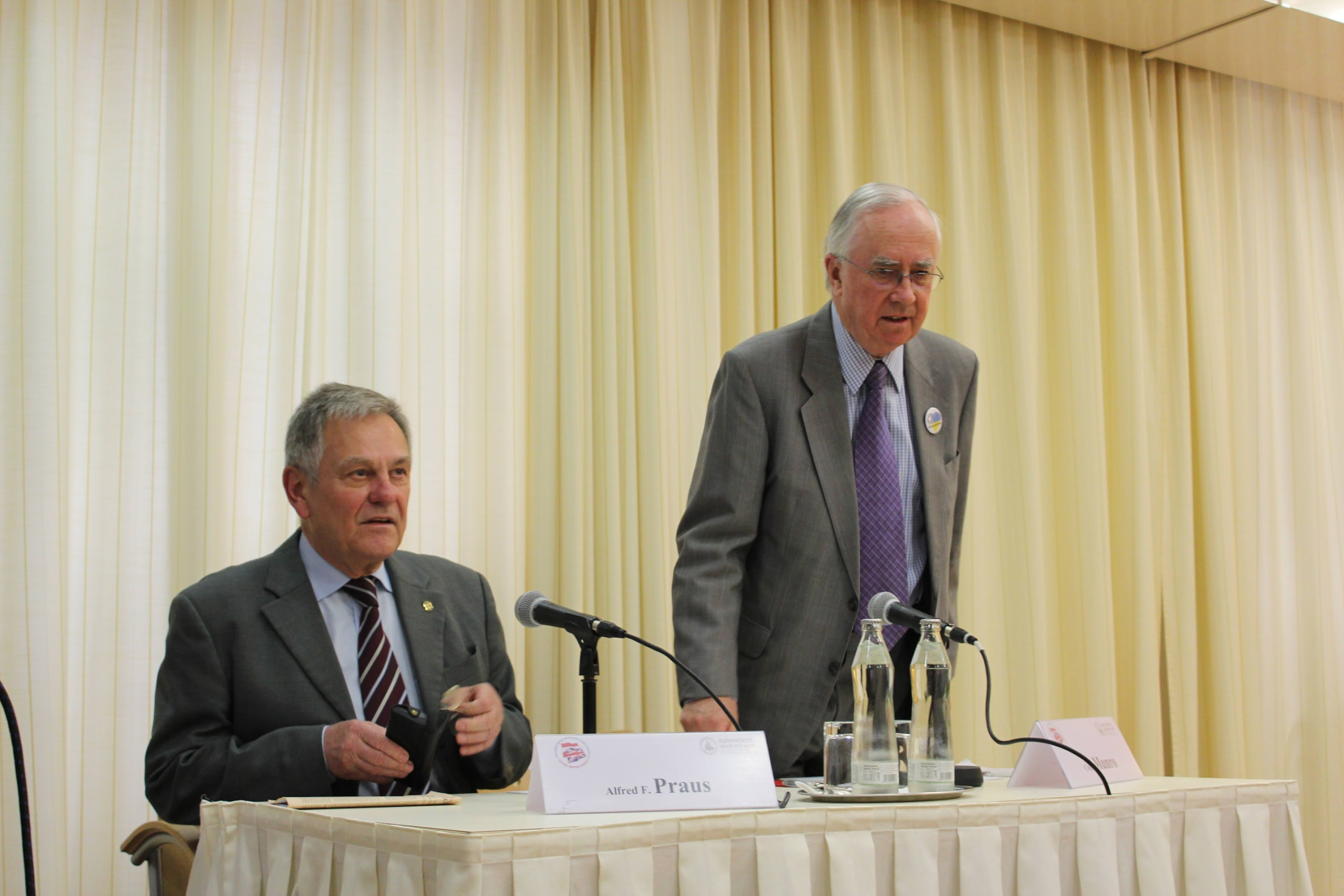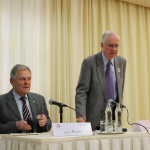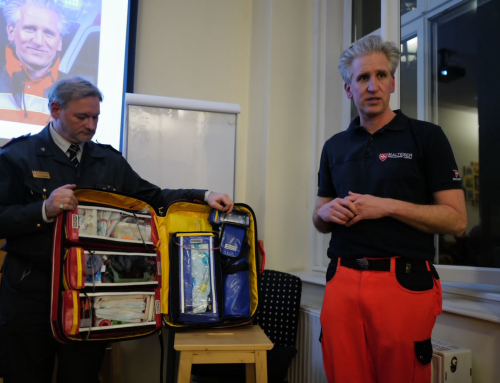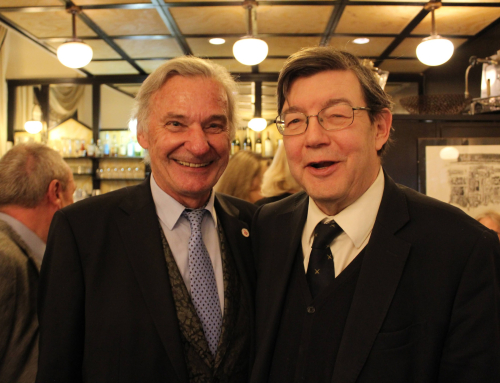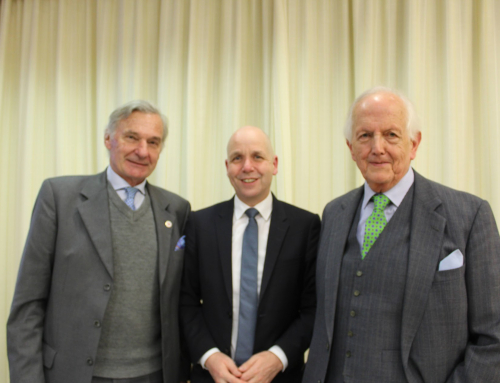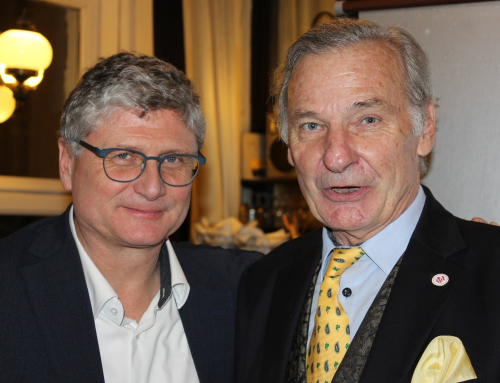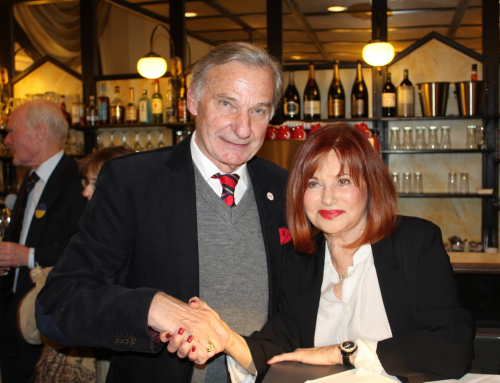A Review of Ukraine – Fight for Identity and Battleground between East and West Wednesday, 1 June 2022 at 18:00h Musiksalon der Diplomatischen Akademie, Favoritenstrasse 15A, 1040 Wien. by Alfred F Praus President of the Ukrainian Austrian Association.
By Wolfgang Geissler
In the period leading up to the Third Punic War, Cato the Elder proposed the destruction of Carthage at every session of the Roman Senate. He is said to have ended all his speeches with this saying – regardless of the actual subject of the discussion. In contrast, Publius Scipio Nasica advised to spare Carthage. 150 BC, the Senate finally approved of Cato, leading to the Third Punic War and the destruction of Carthage.
Abrupt breaks in history, historical caesuras, can usually be recognized in the rear-view mirror of history. Sometimes you feel them immediately: the fall of the Berlin Wall, 9/11 and, unfortunately, the Russian attack on Ukraine in 2022. One decision and one day changed the post-war order of Europe. A new uncertainty was created. Europe is under threat. It had already shown that Europe values peace but could only implement it to a limited extent: Without the USA, the Balkan war would have continued. Now Europe has to rearm again and can be happy if it only experiences a new Cold War, this time without significant US support and with only partial ideological superiority. Unfortunately, Vladimir Putin also brings back history that seemed to be over.
“There stood the cradle of the future, huge Russian state.”
Vladimir Putin on the place where Vladimir I was baptized in Crimea.
The oldest surviving East Slavic chronicle, the „Nestor Chronicle“, and a source for the history of Kievan Rus from the 12th century, is one of the identity-establishing cultural documents of Russia, Belarus and Ukraine. Later interpretations of the chronicle are always linked to the respective legitimation of the rule. Vladimir Putin repeatedly quotes the „Chronicle of Nestor“ in his recourse to the founding of the Rus Empire.
According to historian Heiko Haumann, the claim that the Rus came from Sweden is scientifically indisputable but has recently met resistance from Russian patriots. For them, the Russian Empire was an autochthonous creation, and they certainly didn’t want to owe it to a Germanic people like Sweden. They did not want to admit that the Old East Slavs did not have the strength to form their own state and therefore needed Scandinavian help.
In the empire of Kievan Rus, there were different, related languages, depending on the sphere of life in which they were used. Old Church Slavonic as the liturgical language developed into a literary language. Apart from a few peculiarities, according to the Viennese linguist Michael Moser, one cannot speak of an actual written Ukrainian language before the 14th century. That came much later, and it is still true today that many people outside of western Ukraine do not have a perfect command of the standard Ukrainian language. Instead, a Russian-Ukrainian mixed form dominates.
The main problem with the presentation of Ukrainian history is undoubtedly the lack of state continuity and fixed geographic borders for a long time. One must therefore concentrate on the history of the area or people. According to Andreas Kappeler, Ukrainian historians‘ thousand-year state tradition is „a national myth“.
In modern times, Ukraine did not have continuous statehood. If someone as a nation has no fixed geographical borders for a long time, he falls through the grid of the observers. In modern times, this grid was also unilaterally oriented. Following antiquity, a north-south axis was laid across Europe in the Renaissance. The north was barbaric, the south highly developed. In the age of discovery, the axis of attention turned 90 degrees to the west-east. Now the west was considered progressive, the east backward, except for Poland, which as part of the Christian „Occident“, belonged to the „European communication space“ (Kapeller) and had a renowned university in Kraków.
Under Maria Theresa, the Ukrainians appeared for the first time on the map of the Habsburg monarchy. They remained there as a people loyal to the Emperor until 1918.
Ukraine was territorially divided from 1772. The part ruled by the Tsarist Empire was derogatorily called „Little Russia“ by the Russians to emphasize its secondary status to Greater Russia. These „Little Russians“ were seen as part of the Russian nation. The astonishment was all the greater when the Ukrainians did not feel that way.
The fate of Ukrainians under the Habsburgs and the Tsarist Empire was not to have their own state but to live in a territory where the economic and political elite belonged to another national group. With one difference: Russia was an autocracy, and Austria entered the constitutional age from 1848/49. In the 19th century, the two powers drifted apart regarding the possibility of political participation and the granting of fundamental rights.
When the Ukrainians in the Austrian area were already discussing their own national language and their own national and cultural life was beginning to develop, nation-building was more difficult for the Ukrainians in the Russian sphere of influence. There were forced integration measures.
The Russians convinced themselves that the Ukrainians, the Little Russians, belonged to them because they were only a regional variant of their own nation. They were accordingly surprised at the awakening of Ukrainian nationalism. When the tsarist power suppressed it, the Ukrainian project, which was still not yet concrete, shifted to the Habsburg Empire. From 1863 onwards, the Russian Empire pushed through a rigorous linguistic Russification policy toward the Ukrainians.
Without Ukrainian-language schools, theatres or newspapers, the national movement was doomed to stagnation. But the Ukrainians never became Russians, which still amazes some Russian nationalists today.
“No one in the world is called to free the Ukrainians from the Russian yoke like Austria-Hungary. It is only thanks to Austria that Ukrainian-ness has survived. In Austria, the Ukrainians, like any other people, are allowed to live their faith, their language, their way of life, they enjoy the constitutional rights like any other nation today.” Österreichische Morgenzeitung August 4, 1917. In 1918 Europe and Russia were fighting over Ukraine very similarly to today. The first short-lived Ukrainian state emerged.
„We must immediately teach all these people such a lesson that they will not think of any resistance for decades to come.“
Lenin 1922 on the Ukrainians.
The Holodomor. Annihilation through starvation.
Stalin’s crimes against Ukraine resulted in millions of peasants being starved to death in the breadbasket of the Soviet Union.
„From today, only the Constitution and laws of Ukraine apply on the territory of Ukraine.“
Declaration of Independence of August 24, 1991.
Where it all began. The Orange Revolution.
The “Euromaidan” movement stood for the hope of a free Ukraine alongside Europe. “Ukraine sleeps next to the elephant. As long as Russia is ruled by Gazprom and the KGB, Ukraine will never be safe. It is a terrible legacy.” Ukrainian author Oksana Zabuzhko (in Die Welt, January 16, 2008).
Ukraine falls victim to an imperial dream:
„And I further request the destruction of Carthage.“ Cato the Elder.
„Vladimir Putin wanted to destroy Ukraine and created it in the first place.“ Navid Kermani in DIE ZEIT, May 5, 2022.
The tragedy of Ukraine was eloquently told by Alfred F Praus, President of the Ukrainian-Austrian Association. Eerie and surreal that we experience the first war on European soil since 1945. Despondently we need to accept that this slaughter is not over yet. We are entering very uncertain times.
Colin Munro, former British Ambassador who enabled this lecture, finished by telling an amusing anecdote:
The profoundly religious George W. Bush once said that he looked deep into the eyes of the Russian President and, as he later explained, saw „his soul.“ Jiri Dienstbier reportedly countered, “ I looked into his eyes too, and what did I see? KGB!“
After all this, we needed a break and got it. Delicious canapés and selected wines awaited us.
***
Mehr Fotos HIER

